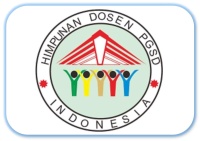Perilaku Narsistik Pengguna Media Sosial di Kalangan Mahasiswa dan Implikasi dalam Layanan Bimbingan Dan Konseling
Abstract
Keywords
Full Text:
PDFReferences
Ali, M., & Asrori, M. (2008). Psikologi
Remaja Perkembangan Peserta Didik. Jakarta: Bumi Aksara.
Asiah, N., Taufik., & Firman. (2018).
Hubungan Self Control dengan Kecenderungan Narsistik Siswa Pengguna Jejaring Sosial Instagram di SMP Negeri 2 Padang. Jurnal Neo Konseling.
Durand, V. M., & Barlow, D. H. (2007).
Psikologi Abnormal. Yogyakarta: Pustaka Pelajar.
Engkus., Hikmat., & Saminnurahmat.
(2017) Perilaku Narsis pada Media Sosial di Kalangan Remaja dan Upaya Penanggulangannya. Jurnal Penelitian Komunikasi, 2(2).
Hartawi, E., & Yusra, Z. (2018). Kontribusi Penerimaan Diri dan Tipe Kepribadian Narsistik terhadap Penggunaan Aplikasi Photo Editor. Jurnal RAP UNP, IX(1), 25-36.
Izzati, F., & Irma, A. (2018). Perilaku
Narsistik pada Pengguna Instagram di Kalangan Mahasiswa Universitas Serambi Mekkah. Jurnal Ilmiah Mahasiswa FISIP Unsyiah, 3(3).
Larsen , R., & Buss, D. M. (2018).
Personality Psychology Domains of Knowledge Sixth Edition. New York. McGraw-Hill Education.
Rumaisa., Arianti, R., &. Anshori, H. (2015). Hubungan Minat Selfie terhadap Kecenderungan Gangguan Kepribadian Narsistik pada Siswa-Siswi di SMPN 7 Kelas VII Banjarmasin. Pusat Penelitian dan Penerbitan Institut Agama Islam Negeri Antasari, (1301451498), 1–81.
Santi (2017). Dampak Kecenderungan
Narsiscisme terhadap Self-Esteem Pengguna Facebook Mahasiswa PGSD Universitas Nusantara PGRI. Jurnal Dimensi Pendidikan dan Pembelajaran, 5(1), 29.
Sari, A., Ilyas, A., & Ifdil. (2018) Tingkat
Kecanduan Internet pada Remaja Awal. JPPI (Jurnal Penelitian Pendidikan Indonesia), 3(2), 45.
Slameto. (2010). Belajar & Faktor-faktor
yang Mempengaruhi. Jakarta. Rineka Cipta.
Widiantari, K, S., & Herdiyanto, Y. K.
(2013). Perbedaan Intensitas Komunikasi Melalui Jejaring Sosial antara Tipe Kepribadian Ekstrovert dan Introvert pada Remaja. Jurnal Psikologi Udayana, 1(1), 106-115.
Widiyanti, W., Solehuddin, M., & Saomah, A. (2017). Profil Perilaku Narsisme Remaja serta Implikasinya bagi Bimbingan dan Konseling. Indonesian Journal of Educational Counseling, 1(1), 15-26.
Widyastuti, F. (2017). Perbedaan Tingkat
Kecenderungan Narsistik pada Siswa Introvert dan Ekstrovert di SMA PIRI 1 Yogyakarta. E-Journal Bimbingan dan Konseling Edisi 3.
DOI: http://dx.doi.org/10.24036/e-jipsd.v8i2.7905


